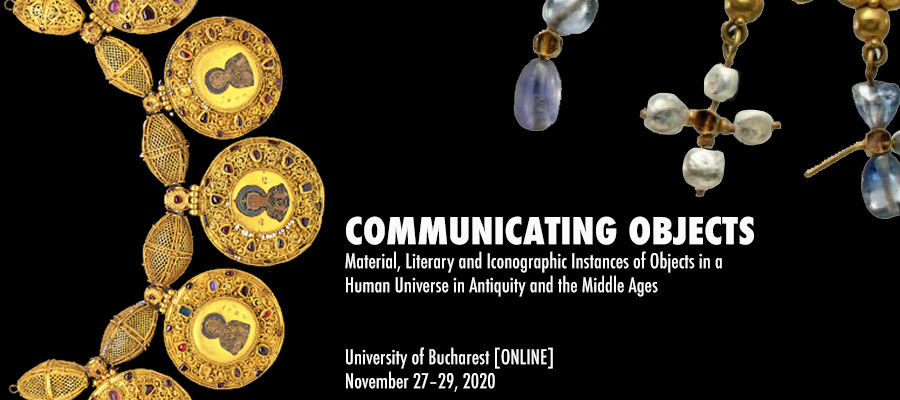Communicating Objects. Material, Literary and Iconographic Instances of Objects in a Human Universe in Antiquity and the Middle Ages, University of Bucharest [ONLINE], November 27–29, 2020
Material culture occupies a special place in most research conducted on Antiquity and the Middle Ages. Interdisciplinary approaches have allowed for the enrichment of traditional paradigms used by archaeologists and historians, as a follow-up to the valorisation of the social life of things, or of the agency characterising objects in any given society. Objects which are deliberately associated are more susceptible of becoming expressive in the presence of humans. From this perspective, associating objects, and exploring potential reasons for their association and for their compatibility, opens up multiple possibilities for reflection.
Here are some suggested topics, meant to inspire, without limiting, the participants’ choice of subject matter:
- the place of associated objects in literary sources. Suggested lines of investigation: the place of associated objects in literary discourses, their role in the construction of characters or as vehicles used to advance the action, to create images or to emphasize key moments in the economy of the texts; the practices of writing about objects, ways of selecting and including them in texts, and the study of certain characteristics of objects judged as indispensable to the fulfillment of said objects’ narrative roles.
- the place of associated objects in constructing images, be they objects carrying images or objects being represented. Suggested lines of investigation: the manners of representing objects, the objects’ insertion in representations and their contributions to visually illustrated discourses.
- the intrinsic materiality of objects places the discussion in the field of archaeology. From this perspective and for the purpose of a better investigation of associated objects and their potential meanings, one (though by no means the only) possible line of enquiry would turn the researcher’s gaze towards funerary archaeology.
Beyond these suggestions, the synchronic and comparative approaches to various media where objects are placed in association (texts, materiality, images) are strongly encouraged, in order to better assess multiple perspectives and perceptions to which the objects could be subjected, as well as the ways in which objects, once put together in particular and deliberate ways, acquire the capacity of acting as agents.
Accepted languages: English, French, Italian, Spanish.
